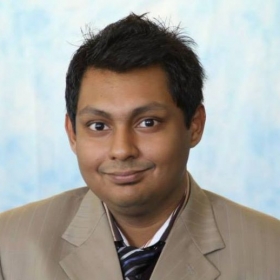
The worldŌĆÖs Largest Sharp Brain Virtual Experts Marketplace Just a click Away

Levels Tought:
University,PHD
| Teaching Since: | Apr 2017 |
| Last Sign in: | 157 Weeks Ago |
| Questions Answered: | 542 |
| Tutorials Posted: | 539 |
Electronics Engineering
New york Institute of Technology
Jan-2015 - Dec-2016
Tutor
NYIT
Jan-2015 - Present
Tutor
NYIT
Jan-2015 - Present
1. Which of the following is a short-run ŌĆŗadjustment?
┬Ā
A. Three new firms enter the computer chip industry.
B. The number of farms in Kansas increases byŌĆŗ 10%.
C. A firm hires six new workers.
D. A firm opens two new plants.
┬Ā
2. In the longŌĆŗ run:
┬Ā
A. Firms have the ability to enter or exit the industry.
B. Firms are able to alterŌĆŗ some, but notŌĆŗ all, of their resources.
C. Firms are unable to adjust their output choices.
D. None of the above are correct.
┬Ā
3. In the shortŌĆŗ run:
┬Ā
A. all factors of production are variable.
B. some factors of production areŌĆŗ variable, while at least one factor of production is fixed.
C. all factors of production are fixed.
D. None of the above are correct.
┬Ā
4. Diminishing marginal returns impliesŌĆŗ that:
┬Ā
A. marginal costs are increasing.
B. marginal costs are constant.
C. marginal costs are decreasing.
D. marginal costs may be increasing or decreasing.
┬Ā
5. When at least one factor of production isŌĆŗ fixed, firms require more and more workers to produce each additional unit of output. ThisŌĆŗ describes:
┬Ā
A. Short-run adjustments.
B. learning by doing.
C. increasing marginal returns.
D. Diminishing marginal returns.
┬Ā
6. In the shortŌĆŗ run, theŌĆŗ firm's total costŌĆŗ equals:
┬Ā
A. the average fixed costsŌĆŗ +average variable costs.
B. the average fixed costŌĆŗ + the marginal cost.
C. the total variable costs only.
D. the total fixed costsŌĆŗ + the total variable costs.
┬Ā
┬Ā
7. The long-run average cost of production is definedŌĆŗ as:
┬Ā
A. the quantity produced by a firm that can choose any size production facility.
B. total cost divided by the quantity of output the firm chooses when at least one factor is fixed.
C. total cost divided by the quantity of output the firm chooses when it can choose a production facility of any size.
D. the quantity produced by a firm when at least one factor is fixed.
┬Ā
8. Total cost divided by the quantity of output the firm chooses when it can choose a production facility of any sizeŌĆŗ describes:
┬Ā
A. the short-run average cost of production.
┬Ā
B. the short-run marginal cost of production.
┬Ā
C. the long-run marginal cost of production.
┬Ā
D. the long-run average cost of production.
┬Ā
9. Since a large or a small wind turbine have similarŌĆŗ installation, operating and maintenanceŌĆŗ costs, but a large turbine has four times the generating capacity but costs less than three times as much as a smallŌĆŗ turbine, the average cost of generating electricity with wind is:
┬Ā
A. at first decreasing and then increasing as output rises.
B. increasing as output increases.
C. decreasing as output increases.
D. constant at each output.
┬Ā
10. Since a large or a small wind turbine have the sameŌĆŗ installation, operating and maintenanceŌĆŗ costs, but a large turbine has four times the generating capacity but costs less than three times as much as a smallŌĆŗ turbine, the wind power industryŌĆŗ faces:
A. constant economies of scale.
B. a hump shaped cost curve.
C. economies of scale.
D. diseconomies of scale.

-----------